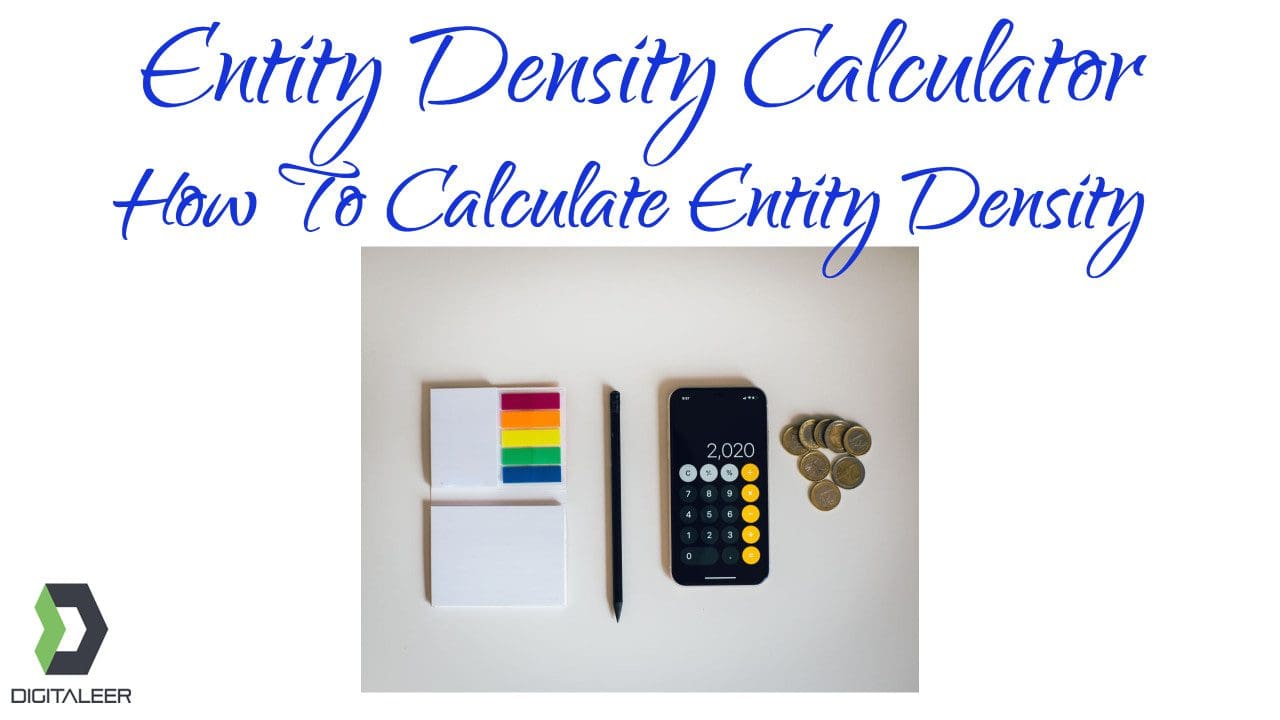The entity density calculator is a number of entities (people, places, organizations) that are mentioned on a webpage and will help you estimate the relationship between the weight and volume of an object. Density, also referred to as density, is among the most significant physical properties of an object. It’s also simple to measure.

How to find density
- Determine the weight of an object. For example, a glass of water weights 200 grams200 grams net (not including the glass).
- Find out the volume of an object, e.g., by using the volume calculator. In our example, it’s 200 cm3200 cm3.
- Divide weight by volume. 200 g/200 cm3=1 g/cm3200 g/200 cm3=1 g/cm3
- Optionally, change the unit. 1 g/cm3=1(1/1000 kg)/(1/1000000) m3=1000 kg/m31 g/cm3=1(1/1000 kg)/(1/1000000) m3=1000 kg/m3
Or you can use our density calculator to make it a breeze!
The fastest way to find the density of an object is, of course, to use our density calculator. To make the calculation, you’ll need to know a few other values to start with. Make a note of the object’s weight and volume. After typing these values into the density calculator, it will give you the result in kilograms per cubic meter.
If all you need is to convert between different units, just click on the units for density and select your desired units from the list. If your unit is not there, you can use our density conversion tool. Plug in your result there; the tool will convert it into:
- Kilograms per cubic decimeter;
- Pound per cubic foot;
- Pound per cubic yard; or
- Pound per US gallon.
Sometimes people are looking to convert grams into cups. If you know the density of the product as well as its weight in grams, you can find the volume of the ingredient in cups. We have prepared the grams to cups calculator specifically for that purpose.
Allow us to throw in a bit of a curve ball here by reminding you that if you want to calculate the density of pixels on your screen, this is not the calculator you are looking for; try PPI calculator instead.
Return On Average Equity Formula
Density formula
The density formula is a different method to calculate the mass and volume of an object. It is simple to determine the weight to volume ratio of an object because you will only require one operation.
Here is the density formula:
=/D=m/v
where:
- D – density;
- M – mass; and
- v – volume.
Density of water
It is sufficient to know that water density is around 1,000 kg/m3.. Its density can fluctuate in response to temperature, just as other materials. However, we have one minor, but extremely important distinction with regards to water. While the standard rule is that when temperature goes up, the density drops, water behaves differently between zero and four degrees Celsius.
The water becomes denser when it is chilled from room temperature. Water’s density is at its highest at 4 degrees Celsius. This is crucial. This makes it harder for lakes to freeze during winter. The water with a temperature of 4 degrees Celsius is the coldest, and sinks to the lowest. The water that is colder stays on the surface and becomes ice. This is a result of an insufficient thermal conductivity for the ice to ensure that the bottom of the lake stays frozen, allowing fish to remain alive. Scientists believe that this is the same reason that helped in the creation of life on Earth. If the water had froze from the bottom upwards, then life wouldn’t have had the chance.
There are other aspects that impact the density of water. It changes slightly regardless of whether it’s tap fresh, or salt water. Every dissolved component in an area of water alters its density. The calculator for water density can help you understand the issue.
Return On Average Equity Formula
ROAE is a formula used to measure the efficiency of an organization. It is calculated by dividing the Net Income by the Average Shareholder’s Equity.
- It is also known as Net Income. It is the net profit that is allocated to equity investors i.e. after subtracting all costs and payments to debentures and loans, as well as preference shares.
- “Average Shareholders Equity” is a measure of an average value of shareholder funds or owner’s cash put into business during the past two years.
As a general rule, Return on Equity is utilized more frequently than this ratio. But, ROAE provides a better understanding of a company’s overall performance, especially in a scenario of changing equity.
Entity Density Calculator FAQ
What is density?
The density of a material is the amount of mass it has per unit volume. A material with a higher density will weigh more than another material with a lower density if they occupy the same volume.
How do I find density?
- Measure the object’s mass (or weight) in kilograms.
- Measure the volume of the object in m3.
- Divide the mass by the volume.
- You will then have the density of the object in kg/m3.
How can I find volume with density and mass?
- Look up the density of the material the object is made of in kg/m3.
- Measure the mass (or weight) of the object in kilograms.
- Divide the mass by the density.
- You will then have the volume of the object in m3.
What is the formula for density?
The formula for density is the mass of an object divided by its volume. In equation form, that’s d = m/v, where d is the density, m is the mass, and v is the volume of the object. The standard units are kg/m3.
How do I find density of a liquid?
- Measure the mass (or weight) of the liquid with some scales and convert to kilograms.
- Measure the volume of the liquid with a measuring jug and convert to m3.
- Divide the mass by the volume.
- You will then have the density of the liquid in units of kg/m3.
